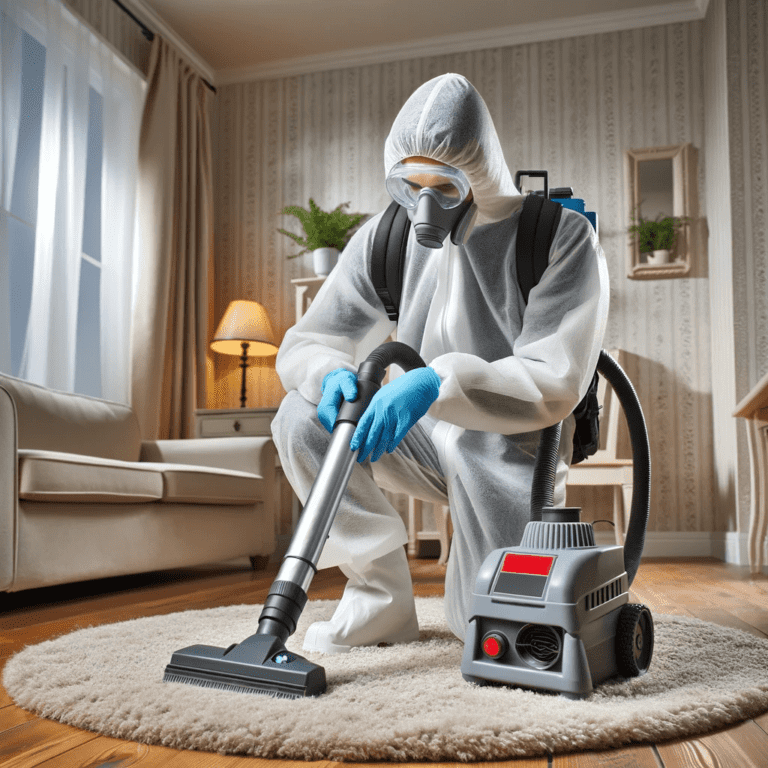

by Dr Diane Mueller – When you’re grappling with mold in your home, ERMI testing often pops up as a testing choice. But what exactly is ERMI testing, and is it the right choice for you? It’s a question that stirs up quite the debate in the industry, and for good reason.
Despite its popularity, it’s important to note that the EPA hasn’t endorsed ERMI testing as a definitive method for assessing mold in homes. This fact alone makes navigating the decision to use ERMI testing a bit more complex.
We have helped thousands of people restore their health and quality of life by diagnosing and treating their Mold Illness
If you’ve stumbled upon the term ERMI testing while exploring options to tackle mold in your home, you’re likely curious about what it really entails. ERMI, or Environmental Relative Moldiness Index, testing is a sophisticated method developed to provide insight into the mold burden within indoor environments. Unlike traditional mold testing techniques, ERMI uses DNA-based analysis to identify and quantify mold species from dust samples collected in your home. This process hinges on MSQPCR technology, which precisely detects and enumerates the DNA of specific mold species from the collected samples.
What sets ERMI testing apart is its ability to offer a detailed snapshot of the mold species present. It’s not just about whether mold exists in your living spaces; it’s about understanding which types are there and in what quantities. This is crucial because different mold species can have varying implications for indoor air quality and health.
However, it’s essential to note that ERMI testing comes with its complexities. The EPA has licensed this technology for use but also emphasizes that it was originally developed for research purposes. Thus, despite its comprehensive nature, ERMI testing shouldn’t be viewed as a standalone solution for assessing indoor mold levels.
One of the most significant advantages of ERMI testing lies in its precision and comprehensiveness. The method boasts an unmatched level of accuracy, thanks to its DNA-based analytic approach. This not only allows for the identification of a wide range of mold species but also ensures that the results are highly detailed and reliable. For homeowners, this means getting an accurate picture of your home’s mold situation, which can be particularly helpful if you’re sensitive to specific mold types or are dealing with persistent health issues that might be related to mold exposure.
Another benefit of ERMI testing is its potential to uncover hidden mold problems. Traditional testing methods might miss molds that aren’t airborne or are lying dormant. ERMI’s DNA analysis can identify mold from dust collected in various home areas, including places where mold isn’t visibly present.
Furthermore, ERMI testing can serve as an invaluable tool for guiding mold remediation efforts. By pinpointing the specific mold species present, professionals can tailor their remediation strategies more effectively, ensuring that they address the root of the problem. Additionally, the detailed insights provided by an ERMI test can inform ongoing mold management strategies, helping to prevent future mold problems before they start.
Despite its benefits, ERMI testing isn’t a one-size-fits-all solution. It’s best utilized as part of a comprehensive mold investigation strategy, complemented by other types of assessments and professional evaluations. Remember, understanding your home’s mold situation fully requires more than just identifying the presence of mold; it’s about crafting a thorough plan to solve and prevent mold issues while ensuring your indoor environment remains healthy and safe.
When considering ERMI testing to assess the mold levels in your home, understanding the procedural steps is crucial. This powerful tool, when used correctly, can reveal potentially harmful mold species lurking in your environment. Here’s how you can perform ERMI testing effectively.
The process begins with identifying the right areas in your home that may be susceptible to mold growth. High-moisture areas, such as basements, kitchens, and bathrooms, are often prime candidates. Next, you’ll need to equip yourself with a dust collector specifically designed for ERMI testing. These devices are tailored to collect samples in a way that’s consistent with the requirements for accurate mold analysis.
Remember, adherence to the correct procedure is key to ensuring that your ERMI testing yields reliable and actionable results.
Once you’ve got your dust collector ready, it’s time to dive into the nitty-gritty of sample collection. This step is pivotal; the quality of your samples directly affects the accuracy of your ERMI score. Here’s what you need to know:
Properly collecting samples for ERMI testing doesn’t have to be a daunting task. With the right tools and a careful approach, you can gather the necessary data to assess the mold situation in your home accurately. Keeping these aspects in mind, you’re well on your way to completing ERMI testing and making informed decisions about the need for mold remediation in your living spaces.

When you’ve undergone an ERMI test to determine the mold presence in your indoor environment, interpreting the results holds paramount importance. The output you receive packs a wealth of insights, provided you understand how to decode the information.
Each ERMI test report is a ton of data that requires a certain level of expertise to interpret correctly. It includes an ERMI score, which is a calculated value reflecting the mold conditions within your home or business. The report divides identified mold species into two groups: one associated with water damage and the other comprising common indoor molds. It’s critical to understand each species’ health effects, notable behaviors, and typical growth locations, as this knowledge helps in appropriately addressing the identified issues. Remember, merely recognizing a high or low ERMI score isn’t enough; comprehensive understanding necessitates familiarity with advanced microbiology and indoor air quality principles.
The accuracy of ERMI testing is quite significant, boasting a near-perfect efficiency due to its DNA-based analysis method. This advanced approach allows for identifying and quantifying 36 different mold species from dust samples. However, despite its high accuracy, it’s essential to remember that ERMI tests do not measure the exact amount of mold present but rather the presence of mold species. Therefore, while ERMI tests provide a detailed snapshot of mold varieties in an environment, seeking professional assessment is advisable when elevated mold levels are detected.Comparing ERMI Test Results
Understanding your ERMI score in isolation may not offer complete insight into the mold situation at hand. Comparing your ERMI score to the National Relative Moldiness Index (RMI) scale can provide a relative idea of how your home stands in terms of moldiness. This comparison is facilitated by matching your home’s score against a database developed from over 1,096 homes across the U.S. during the 2006 HUD American Healthy Home Study. Such comparison doesn’t just contextualize your results; it helps in gauging the severity and urgency of remediation efforts that might be required.
When considering ERMI testing to evaluate the mold content in your home, it’s crucial to understand certain factors that might impact the test’s accuracy. Sample collection variability plays a significant role in the test outcomes. For instance, ERMI testing analyzes dust samples, yet if these samples are gathered from various areas within the home without a standard procedure, the results can become skewed, offering a less accurate picture of the overall mold situation. This discrepancy arises because molds distribute unevenly across different home areas, making some spots more prone to mold growth than others.
Also, the interpretation of ERMI scores can be challenging. Though an ERMI score is provided, using it as a standalone measurement to gauge indoor mold levels might not be reliable. The reason is the lack of a universally accepted “good” or “bad” score, making it difficult to interpret the results without professional guidance. ERMI scores are often misinterpreted due to this lack of standardization, underscoring the need for expert analysis to truly understand what your ERMI results signify for your home’s health and mold condition.
ERMI testing is just one of many strategies to assess indoor mold levels, and comparing it to other methods can highlight its limitations. The non-viable air sample test, commonly used in indoor air quality (IAQ) inspections, offers a different approach by pulling air for a set period, often 3-5 minutes, at a consistent rate. This method allows for direct comparisons between samples from various environments or times because it quantifies the mold spores in an exact volume of air. Also, there is the HERTSMI test, a more cost-effective test for the most dangerous 6 mold species.
Amidst the variety of methods available for mold detection, it’s essential to recognize that not all mold tests—or mold inspectors—offer the same level of reliability and insight. ERMI testing, while informative, requires advanced knowledge for proper interpretation, including understanding the health effects of different mold species and their growth behaviors. Other mold testing methods, such as DNA-based tests, promise more detailed insights into the mold’s cause and condition, albeit at a higher cost.
The variable effectiveness of different tests highlights the importance of selecting both the right type of test and the right professionals to conduct these tests. Since ERMI testing does not provide the best context for active mold growth due to its design to offer historical data, engaging with skilled inspectors who can recommend the most suitable test for your specific situation becomes crucial. Experience, expertise in mold identification, and the ability to interpret complex test results are key qualities to look for in professionals. This ensures you receive insightful guidance tailored to your home’s needs, ultimately leading to more informed and effective mold management decisions.
ERMI testing stands out as a cutting-edge tool in the battle against indoor mold, offering a DNA-based approach that’s both precise and comprehensive. Yet, it’s not a one-size-fits-all solution. The effectiveness of this method hinges on the skill with which samples are collected and the complexity of interpreting the scores. When comparing ERMI to traditional testing methods, the choice becomes clear: it’s about selecting the tool that best fits your specific situation. Ultimately, navigating the intricacies of mold assessment demands professional insight. By leaning on experts who understand the mold species and the nuances of test results, you’re ensuring a healthier indoor environment.

We have helped thousands of
people restore their health
and quality of life by diagnosing
and treating their Lyme Disease.
“Dr. Mueller’s approach to medicine is refreshing! There is only so much you can do with western medicine and in my life I was needing a new approach. By addressing the whole body, nutritional diet factors, environmental factors, blood work, and incorporating ideas I had not previously known, I was able to break through with my conditions. I am not only experiencing less pain in my life, but through the process of healing guided by Dr. Diane Mueller, I am now happy to say I have more consciousness surrounding how I eat, what to eat and when things are appropriate. Living by example Dr. Mueller has a vibrancy that makes you want to learn and know more about your body and overall health. I highly recommend her to anyone looking for new answers, a new approach to health, or in need of freedom from pain and limitations.”
-Storie S.
Kihei, HI
